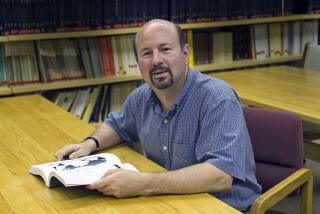Reporting on quacks and pseudoscience: The problem for journalists
Recently, we raised the question of how political journalists should deal with candidates for president who mouth the quackery of climate change denial. But the problem of how to write about pseudoscience goes much broader.
In part that’s because quack science has penetrated so deeply into public discourse -- witness the huge audience tuning in to the egregious Dr. Oz. There’s also the impulse of journalists at major news organizations to give all sides of a question equal play, regardless of their credibility.
But last week Keith Kloor of Discover Magazine and Julia Belluz of Vox, in similar articles, examined yet another ethical issue: How to report on popular purveyors of scientific nonsense without ended up giving them even more exposure -- that is, spreading the disease of misinformation in the process of trying to wipe it out.
The immediate topic of both pieces is the work of a spectacularly successful new dispenser of pseudoscientific hogwash. She’s Vani Hari, who blogs writes, and makes public appearances under the moniker “The Food Babe.” Hari has parlayed her photogenic appeal and earnest personality into a great, and presumably very profitable, business even though, as Kloor writes, “she seems immune to facts.”
She’s worse than that, actually: Under the guise of offering a “common sense” approach to food choices, she actively distributes misinformation. She attacks food additives because they’re “chemicals.” She told the Atlantic, “there is just no acceptable level of chemical to ingest, ever,” but seemingly fails to understand that pretty much everything we ingest is a chemical, including dihydrogen monoxide (water).
“Avoid ingredients you can’t pronounce or that you’ve never heard of,” she counsels, positing individual ignorance as a healthcare rule to live by. She tortures the origin and chemicals deemed safe to make them sound disgusting or dangerous -- “I couldn’t believe there was beaver’s ass in my vanilla ice cream, coal tar in my mac and cheese, yoga mat and shoe rubber in my bread,” she writes in her book, distorting each of these perfectly safe compounds beyond recognition or reality. There’s money in fostering senseless fears among the public, and she’s positioned herself well to scoop it up.
Hari is a new face in the pseudoscience game. (For more debunking of her shtick, read Orac at ScienceBlogs, chemistry professor Michelle M. Francl of Bryn Mawr at Slate and “SciBabe” Yvette d’Entremont at Gawker -- headline not safe for work.)
But as Kloor observes in Discover, Hari’s model is a familiar one, based on exploiting a popular suspicion of complexity -- of things and phenomena that can only be understood or explained by experts. In the modern world, there’s a lot of that, including vaccines, GMOs in food, cellphones, Wi-Fi. It may be natural for humans confronted with a technology that appears one step removed from magic to supplement, or replace, acceptance with an intuitive untruth: Invisible rays carry signals to my phone, so who’s to say they’re not cancer-causing?
People willing to exploit these inchoate fears for profit abound. If they hang around long enough, their very longevity gives them credibility. Recently Joseph Mercola, a hawker of “organic” nostrums and opponent of mammography and child vaccinations, even made it into the pages of the New York Times, where he was quoted, astonishingly, as a credible expert on cellphone radiation. (The Times later acknowledged that Mercola has been “widely criticized by experts” and perhaps “should not have been cited as a source.”) For an indication of how Mercola and Hari feed on each other’s model, see this clip of their joint appearance on YouTube.
Sometimes charlatans carry their credibility over from other walks of life. Why does anyone listen to Jenny McCarthy’s pronouncements on the dangers of vaccines, if not because she’s a TV starlet? And why does anyone listen to Robert F. Kennedy Jr. on the same topic, provably wrong as he is, if not because of the magic of his name?
Yet the very act of debunking carries the implication that the quack is important or credible enough to warrant attention in the first place. At Vox, Belluz offers a few rules for crank watchers. She advises going after not only cranks, but their enablers: Who launched the career of Dr. Oz? It was Oprah Winfrey. She largely escapes blame for Oz’s promotion of quackery, but as Brendan Nyhan of Dartmouth told Belluz, we should be “not just naming and shaming the public figures who mislead people but the institutions that give them platforms.”
Belluz argues, sagely, that we should “avoid giving equal weight to both sides of an argument that aren’t actually equal according to science.” Case in point: climate change, which is accepted by the vast majority of scientific experts. Nor should journalists elevate every ginned-up scientific “controversy” into one warranting intensive debunking -- that’s a prime means by which fringe claims gain a foothold in popular consciousness. The media should reserve its fire for pseudoscience promoted by public figures and government institutions.
That’s good advice, for the woods are full of charlatans just waiting for a chance to loose their fear-mongering theories upon a willing public, and the press shouldn’t be providing them with a springboard.
Keep up to date with the Economy Hub. Follow @hiltzikm on Twitter, see our Facebook page, or email mhiltzik@latimes.com.







